Come Live with Me

Brief Synopsis
Cast & Crew
Clarence Brown
James Stewart
Hedy Lamarr
Ian Hunter
Verree Teasdale
Donald Meek
Film Details
Technical Specs

Synopsis
Middle-aged New York publisher Barton Kendrick and his wife Diana have a "modern" marriage in which each allows the other romantic freedom. Diana secretly wishes the situation were different, but Bart revels in his relationship with the beautiful Johnny Jones. Johnny, a Viennese refugee who has been staying illegally in New York since her temporary visa expired, is in love with Bart but won't accept his marriage proposal because she is worried that Diana will be hurt. When immigration official Barney Grogan comes to Johnny's apartment to tell her to report for deportation, he informs her, off the record, that if she marries an American citizen she will not be deported, then gives her a week to find a husband. While Johnny is thinking things over in a diner, she encounters Bill Smith, an aspiring writer who is completely broke. She gets the idea to marry him and invites herself back to his apartment. When she proposes, he is reluctant, but eventually agrees and convinces her to draw up a contract whereby she will pay him $17.80 each week. Two months later, Bill has fallen in love with Johnny. Meanwhile, Bart knows that Johnny has been granted residency, but she won't tell him how. One night, when Bart proposes and says that his divorce can be arranged in six weeks, she confesses that she is married. She then goes to see Bill a day early, and he shows her his novel based on their marriage, Without Love . She is touched, but wants him to give her a divorce right away, and tells him that she loves someone else. Though heartbroken, he agrees to the divorce. After some revisions, Bill sends his unfinished novel to some publishers, one of whom is Bart. Diana, who reads all of Bart's submissions, calls Bart to tell him about the wonderful new writer she has discovered, and when he reads the unlikely plot, Bart finds it too familiar. He then invites Bill to his office, and as he staunchly defends the "older man" in Bill's story, Diana realizes that Bart is the real older man. She convinces Bart to give Bill a $500 advance, and Bill thinks that he now has a chance with Johnny. Diana then tells Bart that she will give him a divorce as soon as Bart is convinced that Johnny really loves him and not Bill. Bill goes to see Johnny to repay her and tells her that before he agrees to a divorce, they must take a trip together. After leaving New York, they stop at a roadside restaurant, where she secretly calls Bart, who promises to come for her right away. They then drive to a farm owned by Bill's kindly grandmother. Later that night, while staying in rooms divided by a three-quarter wall, neither Bill or Johnny can get to sleep. After Bill tells Johnny how fireflies show their love and recites a romantic poem, she falls in love and turns her flashlight on and off like a firefly. Just then Bart arrives, and Bill soon realizes that Bart is his romantic rival. The men argue, but after Bill goes to his room, Johnny sends away Bart, who finally realizes that he still loves Diana. When Johnny goes upstairs, she flashes the light again and they kiss over the wall that bears one of Grandma's Shakespeare-quoting samplers, "All's well that ends well."

Director

Clarence Brown
Cast
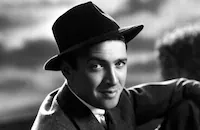
James Stewart

Hedy Lamarr
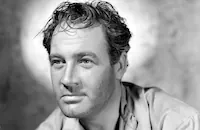
Ian Hunter
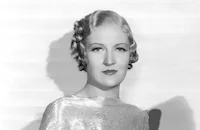
Verree Teasdale
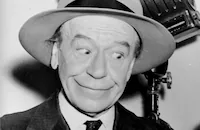
Donald Meek
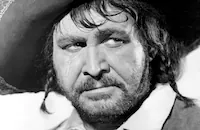
Barton Maclane
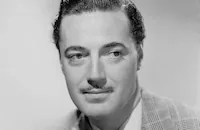
Edward Ashley
Ann Codee

King Baggott
Adeline De Walt Reynolds
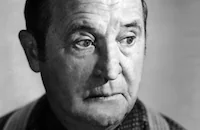
Frank Orth
Frank Faylen
Horace Macmahon
Greta Meyer
Crew
Adrian
Clarence Brown
Randall Duell
George Folsey
Cedric Gibbons
Frank E. Hull
Patterson Mcnutt
Douglas Shearer
Herbert Stothart
Walter Strohm
Virginia Van Upp
Edwin B. Willis

Photo Collections
Videos
Movie Clip


Trailer
Hosted Intro
Film Details
Technical Specs

Articles
Come Live With Me
Stewart had previously worked under Brown's guidance in The Gorgeous Hussy (1936), Wife vs. Secretary (1936) and Of Human Hearts (1938). Decades later, the actor looked back on his early work with Brown as "a wonderful beginning and groundwork for me. He showed me the importance of a look, the importance of a movement - a visual saying of a line. I learned from watching Clarence, and I watched him all day long."
One of Stewart's favorite anecdotes concerned a brief bit he performed under Brown's direction in Come Live With Me. On location for the Western The Far Country in Canada 1954, he had an "old guy" come up as he was having lunch and tell him he remembered a "picture show" in which the actor said a poem about fireflies. The man couldn't recall the film's title, but Stewart was impressed that, 13 years later, he remembered that fleeting moment. Stewart said, "That's the thing, that's the great thing about movies. If you're good and God helps you and you're lucky enough to have a personality that comes across, you're giving people little, little tiny pieces of time - pieces of time that they never forget." Author Gary Fishgall was so struck by this quote that he titled his 1997 biography Pieces of Time: The Life of James Stewart.
Producer/Director: Clarence Brown
Screenplay: Patterson McNutt, from story by Virginia Van Upp
Production Design: Cedric Gibbons, Randall Duell
Cinematography: George Folsey
Costume Design: Adrian
Editing: Frank E. Hull
Original Music: Herbert Stothart
Principal Cast: James Stewart (Bill Smith), Hedy Lamarr (Johanna Janns, aka Johnny Jones), Ian Hunter (Barton Kendrick), Verree Teasdale (Diana Kendrick), Donald Meek (Joe Darsie), Barton MacLane (Barney Grogan).
BW-87m. Closed captioning
by Roger Fristoe

Come Live With Me
Quotes
Trivia
Notes
The romantic poem recited by "Bill" in the film, was Christopher Marlowe's "Come Live with Me," first published in The Passionate Pilgrim in 1599. This film marked the motion picture debut of actress Adeline de Walt Reynolds. According to M-G-M publicity materials contained in the AMPAS Library file on the film, Reynolds was an Iowa farmer's wife who entered college in her sixties and graduated from the University of California at Berkeley at age seventy. She was discovered by director Clarence Brown in a local theatrical production and continued to act in films and on the stage until her death in 1961.
















